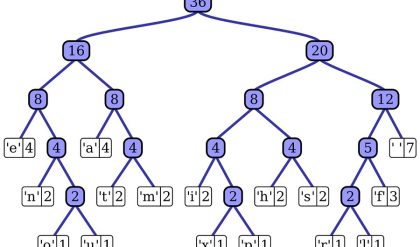Once an algorithm has been specified, you have to prove its correctness. That is, you have to prove that the algorithm yields a required result for every legitimate input in a finite amount of time. For example, the correctness of Euclid’s algorithm for computing the greatest common divisor stems from the correctness of the equality gcd(m, n) = gcd(n, m mod n) (which, in turn, needs a proof; see Problem 7 in Exercises 1.1), the simple observation that the second integer gets smaller on every iteration of the algorithm, and the fact that the algorithm stops when the second integer becomes 0. For some algorithms, a proof of correctness is quite easy; for others, it can be quite complex. A common technique for proving correctness is to use mathemati-cal induction because an algorithm’s iterations provide a natural sequence of steps needed for such proofs. It might be worth mentioning that although tracing the algorithm’s performance for a few specific inputs can be a very worthwhile activ-ity, it cannot prove the algorithm’s correctness conclusively. But in order to show that an algorithm is incorrect, you need just one instance of its input for which the algorithm fails.
The notion of correctness for approximation algorithms is less straightforward than it is for exact algorithms. For an approximation algorithm, we usually would like to be able to show that the error produced by the algorithm does not exceed a predefined limit. You can find examples of such investigations in Chapter 12.
Analyzing an Algorithm
We usually want our algorithms to possess several qualities. After correctness, by far the most important is efficiency. In fact, there are two kinds of algorithm efficiency: time efficiency, indicating how fast the algorithm runs, and space ef-ficiency, indicating how much extra memory it uses. A general framework andspecific techniques for analyzing an algorithm’s efficiency appear in Chapter 2.
Another desirable characteristic of an algorithm is simplicity. Unlike effi-ciency, which can be precisely defined and investigated with mathematical rigor, simplicity, like beauty, is to a considerable degree in the eye of the beholder. For example, most people would agree that Euclid’s algorithm is simpler than the middle-school procedure for computing gcd(m, n), but it is not clear whether Eu-clid’s algorithm is simpler than the consecutive integer checking algorithm. Still, simplicity is an important algorithm characteristic to strive for. Why? Because sim-pler algorithms are easier to understand and easier to program; consequently, the resulting programs usually contain fewer bugs. There is also the undeniable aes-thetic appeal of simplicity. Sometimes simpler algorithms are also more efficient than more complicated alternatives. Unfortunately, it is not always true, in which case a judicious compromise needs to be made.
Yet another desirable characteristic of an algorithm is generality. There are, in fact, two issues here: generality of the problem the algorithm solves and the set of inputs it accepts. On the first issue, note that it is sometimes easier to design an algorithm for a problem posed in more general terms. Consider, for example, the problem of determining whether two integers are relatively prime, i.e., whether their only common divisor is equal to 1. It is easier to design an algorithm for a more general problem of computing the greatest common divisor of two integers and, to solve the former problem, check whether the gcd is 1 or not. There are situations, however, where designing a more general algorithm is unnecessary or difficult or even impossible. For example, it is unnecessary to sort a list of n numbers to find its median, which is its n/2 th smallest element. To give another example, the standard formula for roots of a quadratic equation cannot be generalized to handle polynomials of arbitrary degrees.
As to the set of inputs, your main concern should be designing an algorithm that can handle a set of inputs that is natural for the problem at hand. For example, excluding integers equal to 1 as possible inputs for a greatest common divisor algorithm would be quite unnatural. On the other hand, although the standard formula for the roots of a quadratic equation holds for complex coefficients, we would normally not implement it on this level of generality unless this capability is explicitly required.
If you are not satisfied with the algorithm’s efficiency, simplicity, or generality, you must return to the drawing board and redesign the algorithm. In fact, even if your evaluation is positive, it is still worth searching for other algorithmic solutions. Recall the three different algorithms in the previous section for computing the greatest common divisor: generally, you should not expect to get the best algorithm on the first try. At the very least, you should try to fine-tune the algorithm you already have. For example, we made several improvements in our implementation of the sieve of Eratosthenes compared with its initial outline in Section 1.1. (Can you identify them?) You will do well if you keep in mind the following observation of Antoine de Saint-Exupery,´ the French writer, pilot, and aircraft designer: “A designer knows he has arrived at perfection not when there is no longer anything to add, but when there is no longer anything to take away.”1

